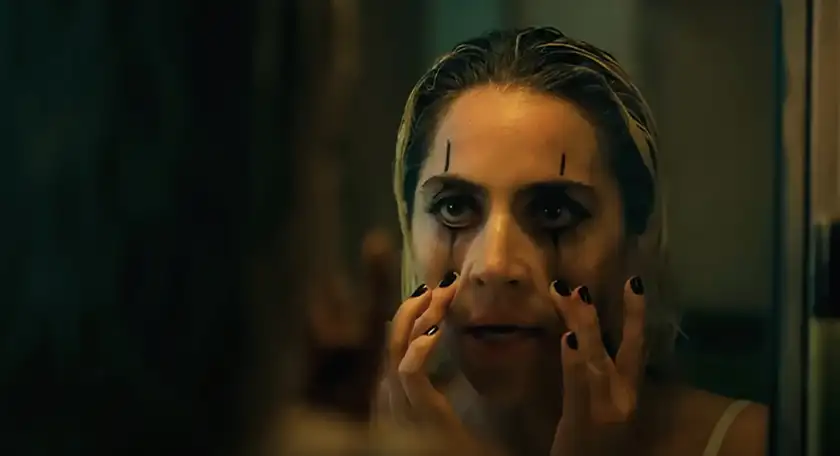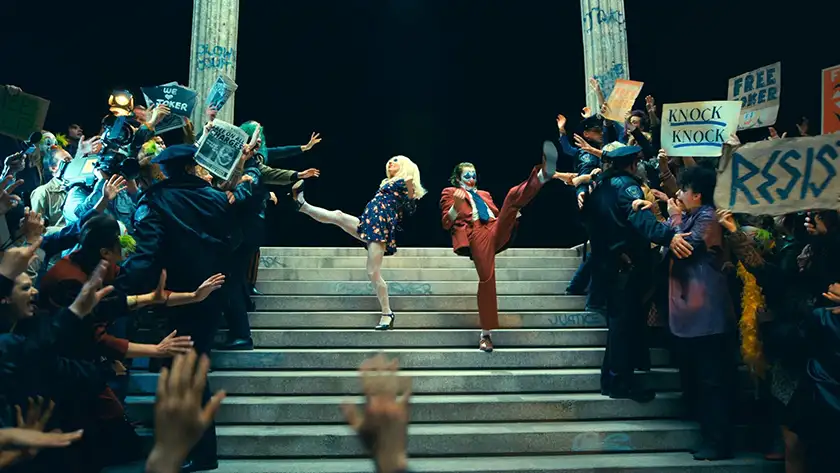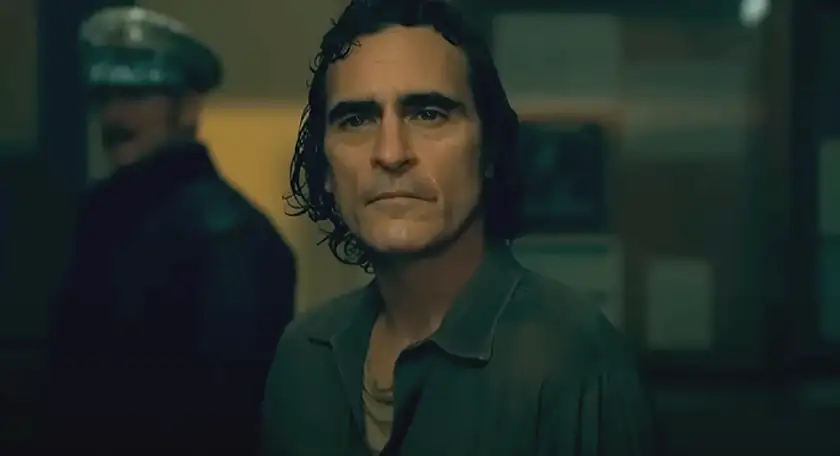Joker: Folie à Deux has left audiences shocked and angry, particularly over its ending. Let’s go through the movie and try to get the meaning of its ending explained!
Joker: Folie à Deux, the sequel to 2019’s Joker, is now in theaters … and the people are not pleased. With an overwhelming number of negative reviews, abysmal word-of-mouth, and an ending scene that … well, may need to be explained, Joker 2 is shaping up to be one of the least crowd-pleasing blockbusters in recent memory. The film reunites us with Arthur Fleck (Joaquin Phoenix, Beau is Afraid), a patient now locked up at Arkham Asylum, preparing to plead insanity in court for the murders he committed two years ago. He also meets and falls in love with Harleen “Lee” Quinzel (Lady Gaga, House of Gucci), a fellow patient and one of the many fans of his destructive clown persona, the Joker. That’s the initial setup, but I will be going into spoilers for the entire movie from here on out to analyze the meaning of its ending.
When I walked out of Joker 2, my first prevailing thought was that a lot of people, especially comic book fans, were going to absolutely despise it. In particular, I knew the ending was going to rub them the wrong way so much that the anger may lead to their own Joker origin stories. But I, being the dumb comic book movie contrarian that I am, not only liked the film as a whole, but found the ending in particular to solidify and enhance everything that was building up to it. I was highly skeptical about the idea of a Joker sequel, but I was ultimately won over despite – or, as I’ll explain, possibly because of – those initial reservations. So, allow me to be an immovable object countering the unstoppable force that is this movie’s negative reception, as I explain the ending to Joker: Folie à Deux, its meaning, and why it works.
What Happens in Joker: Folie à Deux?

Let’s first establish what happens throughout Joker: Folie à Deux and how it all ends. Most of the movie takes place in either the asylum or courthouse as we explore the aftermath of Arthur’s crimes, his connection with Lee, how he’s perceived by the world, and how real to his true self the “Joker” truly is. His lawyer (Catherine Keener, Get Out) is trying to help him convince the world that the Joker is a completely separate personality from Arthur, while others like Lee want him to keep embracing the Joker as his true identity.
Things continue to go wrong for Arthur as he’s frequently mocked and horrifically abused in the asylum, Lee reveals she lied about her status as an inmate to get close to him (as she legitimately idolizes the Joker), and his efforts to convince the world of his innocence prove ineffective. When it becomes clear just how much damage and pain he’s caused, Arthur denounces the Joker entirely, admitting his own guilt, much to the dismay of the Joker’s many rabid fans. This gets him the death sentence and causes Lee to leave him behind.
Joker 2 is already alienating a lot of its audience just by having Arthur backtrack on his arc from the first film so heavily. But then the ending comes along and sees another inmate and Joker fan stab Arthur to death in disgust. The murderer then carves a smile into his face, presumably taking up the mantle as the next Joker … the end! Yeah, can you see why a lot of viewers would be pissed off here? What was advertised as Joker and Harley Quinn taking on the world is instead a literal and figurative slaughtering of the iconic character that was built up in the previous movie … and that, to me, is one of the film’s greatest strengths and the core of its meaning.
Joker: Folie à Deux Ending Explained

At the start of Joker 2, Arthur Fleck is clearly sad, subdued, and beaten down by his imprisonment. He’s practically reverted to who he was at the start of the first movie, indicating that his creation of the Joker, despite the sick, twisted “glory” it brought him, was never going to rid him of his pain. As he eventually comes to realize that himself, the façade of the Joker finally crumbles, leaving only the scared and afraid Arthur that we knew at the start of this duology. But the tragic meaning of Folie à Deux is that not only does he cling to the Joker, but so too does everyone else.
Throughout the movie, Arthur has a legion of crazed fans in and out of the asylum, and Arthur seemingly has a lover in Lee that brings him his only source of happiness. But none of this is giving attention to Arthur Fleck, the troubled man who was failed by a system that neglects mental health. It’s giving attention to the Joker, the dancing, iconic killer clown. That’s what everyone wants to see, including Lee, the inmates, and even the audience who was drawn to both Joker films because of that sensational iconography. We don’t get the fun, villainous couple we were advertised. We don’t get the new reign of the clown prince of crime. Neither do any of the characters by the end of the movie.
And unfortunately, no one cares about the man underneath it all. So much so that, when that man is all that’s left, he’s violently disposed of, deemed worthless by his killer and society at large. In this final scene, Arthur Fleck becomes nothing more than the shed skin of a snake that is the Joker’s madness, one that now wears a new skin in the form of the supposed new Joker. The inmate who takes his place may be the “true” Joker, or he may be just the next in a line of sad, broken men who think their salvation lies in this homicidal persona.
What Joker: Folie à Deux Says About Us

Let’s all be brutally honest here: the first Joker movie didn’t bring in $1 billion worth of theatergoers because it was promising the slow, multilayered collapse of a mentally ill person. It brought in that money because it’s about the freaking Joker. It’s an “origin story” for arguably the most iconic comic book villain of all time. That’s what most people cared more about. That’s what got it so much attention in the first place. Without it, you’d have the same kind of psychological, independent thriller that most mainstream audiences don’t turn out for. It would be just as good and contain just as much meaning, but it wouldn’t be nearly as popular.
So, what does its sequel do? Willfully deny audiences the escalation they’d expect with the Joker at every possible turn, before finally ending with a confirmation that they were never going to get it and never will within this universe. If you went into Joker 2 wanting to see the Joker and Harley Quinn in a lovestruck conquest through flashy, stylized musical numbers, dancing in that falsely advertised staircase scene from the trailer, you’re probably going to be severely disappointed that the whole movie amounts to absolutely nothing of the sort … which would be the very reaction the film is harshly criticizing.
While I think a majority of people understood the meaning of the first Joker – that being, we should not admire or respect the person Arthur becomes – some undoubtedly still saw him as sympathetic or, worse yet, heroic. And even if they didn’t, they still enjoyed the full realization of one of their favorite comic book villains. The ending of Joker: Folie à Deux is an extremely intentional middle finger to everyone in that crowd. It is a total condemnation of the allure the people have towards Joker the icon over the broken human underneath the makeup, and a brutal display of how the supposed thrill and fulfillment of becoming such a monster will ultimately still end in emptiness.
Understanding the Ending vs. Liking the Ending

Joker: Folie à Deux ends with a scene that is very deliberately unfulfilling, reverting the dark catharsis of Arthur from the first film to make a point of how uncathartic it always should have been. That doesn’t mean anyone is wrong for disliking this ending or being let down that they didn’t get the movie they wanted. The ending is designed to rile people up … and wouldn’t you know, it did its job. All I hope to do is provide clarity to anyone who is just flat-out bewildered by why these decisions were made in the first place. Whether or not you believe that explanation justifies the final form of Joker 2 we got – or if you even agree with my explanation in the first place – is, as always, up to you.
Joker: Folie à Deux is out now globally in theaters. Read our review of the film below!

